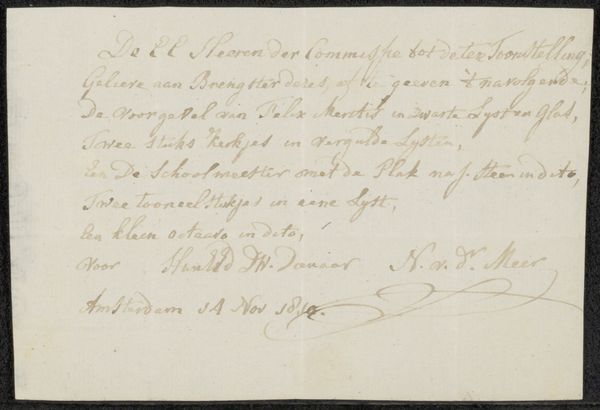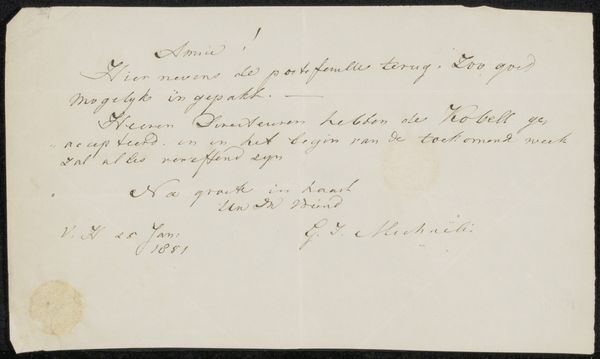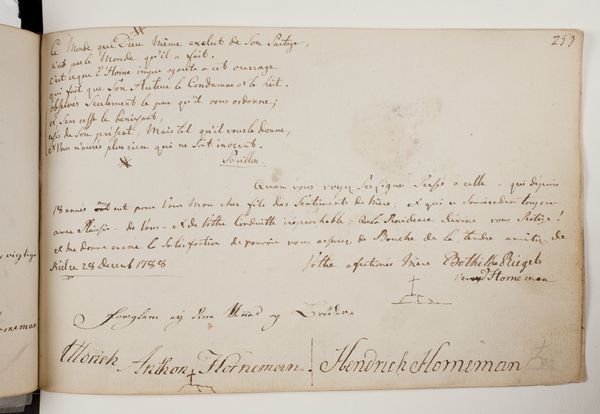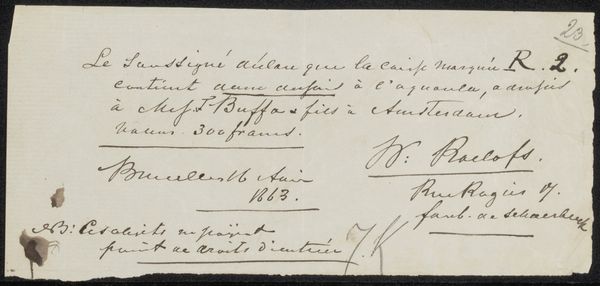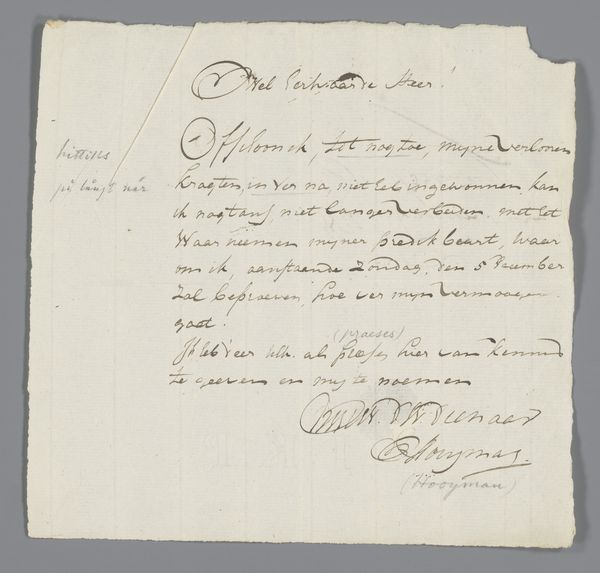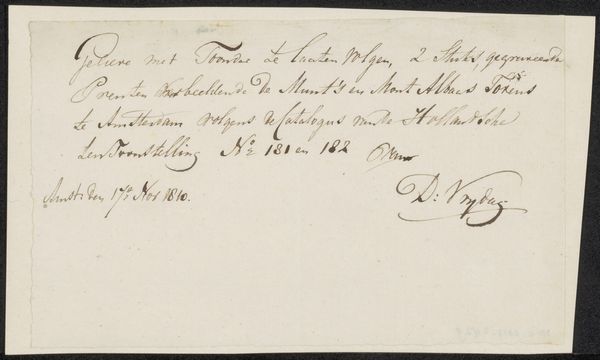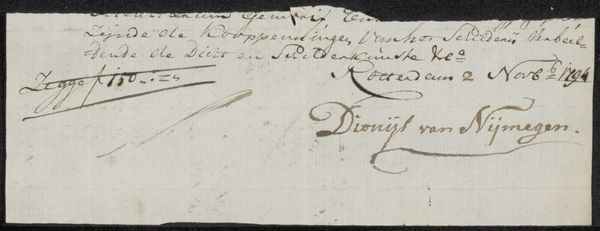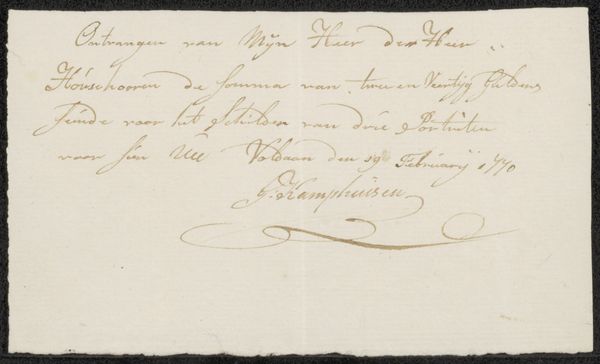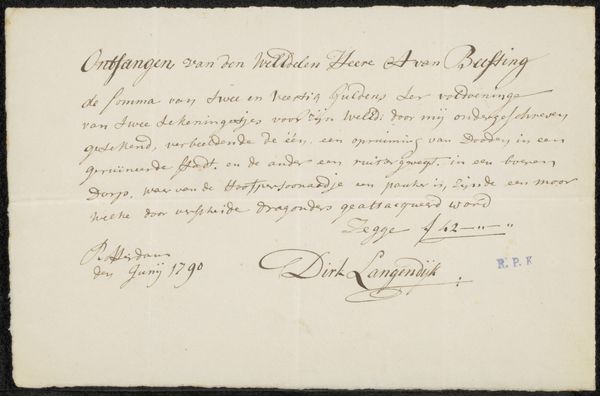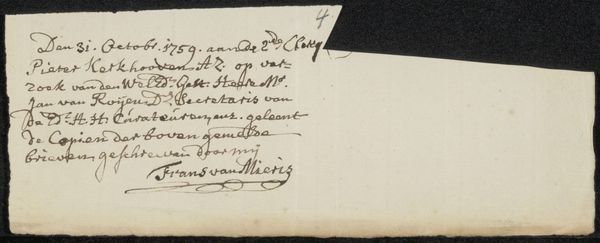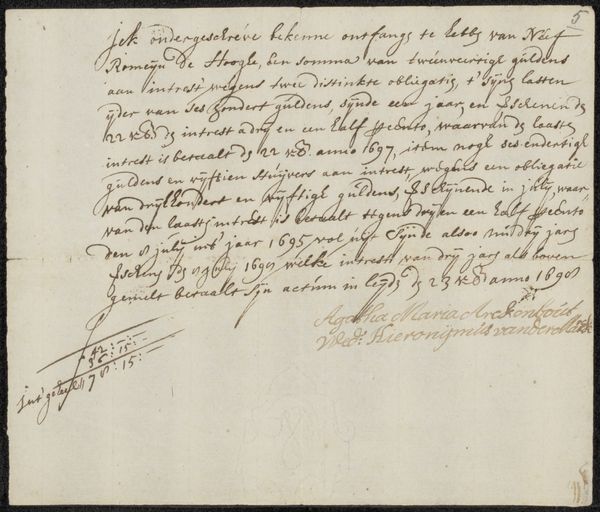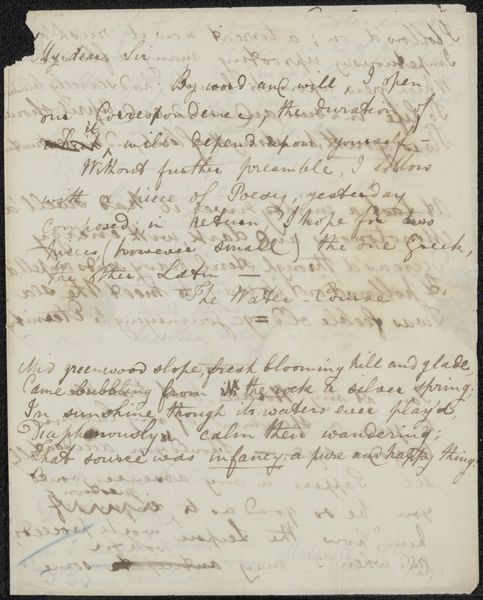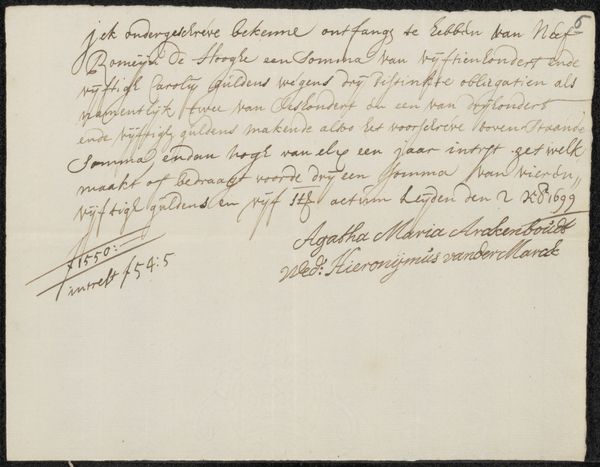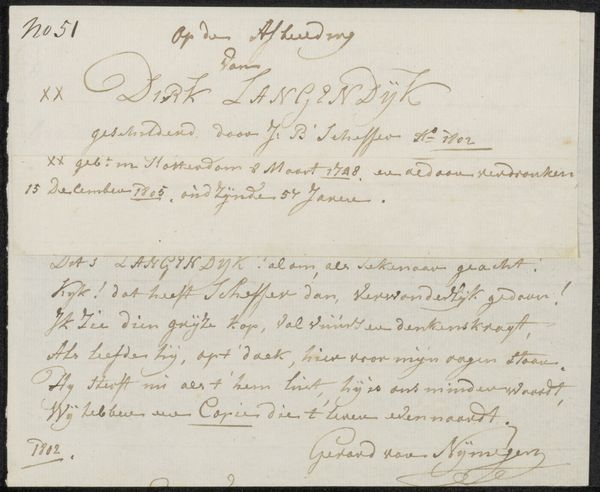
drawing, paper, ink
#
portrait
#
drawing
#
dutch-golden-age
#
paper
#
ink
#
miniature
#
calligraphy
Copyright: Rijks Museum: Open Domain
Editor: This intriguing work, titled "Brief aan Siwert Haverkamp," is believed to have been created around 1735 by Frans van Mieris the Younger. It’s a drawing with ink on paper. I’m struck by the intimacy of it, like peering into a private conversation from centuries ago. The calligraphy seems almost like an artwork in itself! How do you interpret this work in its historical context? Curator: Well, I see it as a potent example of the intersection of art and social networks in the Dutch Golden Age. It's not simply a letter, but also a carefully constructed performance of identity. Consider the calligraphic flourishes, the choice of language – even the quality of the ink and paper all speak to the writer's social standing and the respect he wishes to convey to Haverkamp, likely a fellow intellectual or member of the scholarly community. Who Haverkamp was would definitely color my analysis. Does this ‘letter’ operate more as a symbolic gift than practical message? Editor: A symbolic gift? That's fascinating. It almost feels like these aesthetic choices were consciously employed as markers of status and learning. Like he's sending Haverkamp a small piece of *himself*. Curator: Exactly! In a society where patronage and personal connections were paramount for professional advancement, sending something as simple as a letter could be laden with significance. What impact do you think institutions or academies might have had? Editor: I imagine such institutions reinforced these types of sophisticated communications; perhaps they provided a setting for their use, both modeling and necessitating the skills to be read with effect. Curator: Precisely. This single piece encapsulates how art during the Dutch Golden Age served not only aesthetic purposes but also fulfilled vital social and political functions. Now you begin to understand its relevance and resonance with an educated public. Editor: It's amazing how something as seemingly simple as a letter can reveal so much about the society that produced it. It definitely gives a new dimension to how I view art from this period. Curator: Agreed! It highlights the crucial point that art always operates within, and often reflects, its social, cultural, and political landscape.
Comments
No comments
Be the first to comment and join the conversation on the ultimate creative platform.
